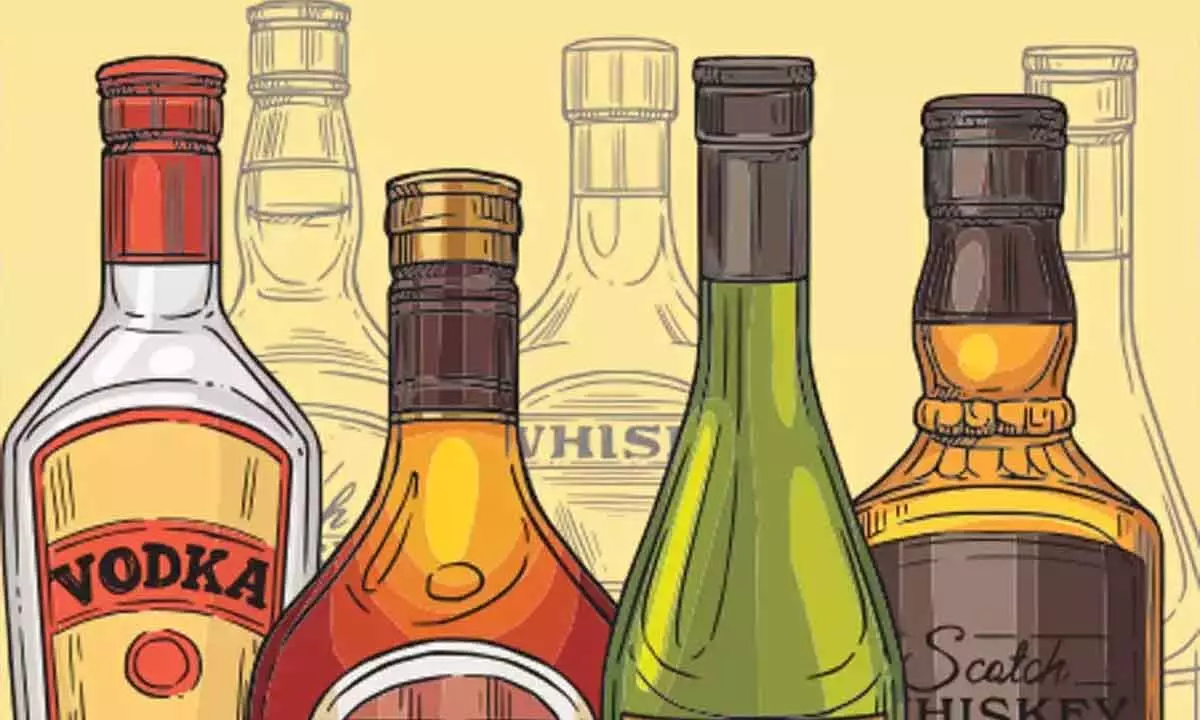Asia-Pacific raises a toast to whisky
The spirits market in Asia-Pacific region is highly diversified vis-à-vis consumption patterns and products
image for illustrative purpose

Although the Asian whisky market should not be regarded as a single monolithic entity, it is worth noting that the Asian Pacific whisky market was worth $1.84 billion in 2021 and is forecast to reach $2.4 billion in 2026!
Single malt whisky market research carefully divides the market by geographic regions, including North America, Europe, Asia-Pacific, South America, the Middle East, Africa, and more. Furthermore, this research report focuses on clearly defining what the industry is all about and what it aims to achieve. This clarity helps in reaching firm and definite conclusions, which is a good development.
The Asia-Pacific spirits market, comprising China, Japan, Korea, India, Australia, Indonesia, Thailand, Philippines, Malaysia and Vietnam, is projected to record a CAGR of 5.49% during the forecast period.
The spirits market in the Asia-Pacific region is highly diversified in terms of consumption patterns and products, mainly due to the differences in tastes and preferences and the social and cultural behaviors across different nations. The market has been growing at a healthy pace, owing to the increased demand for premium alcohol.
Rising incidences of eating outside and clubbing among youngsters have been driving the spirits market's growth in Asia-Pacific. The increasing demand for health and wellness beverages that are infused with bioactive compounds has been boosting the cannabis beverage market's growth. Asia-Pacific has a large millennial consumer base, which has been encouraging key players to expand their geographic presence and increase their consumer base in the region, thus supporting the premium spirits market's growth in the region.
The market is highly competitive, with major players like Pernord Richard, Suntory Holdings Limited, ThaiBev, Diageo, and Asahi Group Holdings, holding a significant share.
The major driving factor for the growth of spirits and other forms of alcohol consumption in countries like China, Japan, Malaysia, and Singapore has been an the increase in spending patterns and a rise in per capita consumption of alcohol due to higher income levels. The demand for spirits in the region is also driven by the high-classed millennials, who wish to go out to social gatherings, leading to the consumption of their favorite liquors. The trend is even influenced by the concept of partying developed in the western part of the world, as more Asian youth consumers want to get involved in drinking habits at an early age, which may boost the overall market.
There has been an influx in the growth of the spirits market in smaller countries like Thailand, Malaysia, Singapore and Indonesia, as they have been adopting the culture of drinking across social gatherings. A lot of southeast countries, being hotspots of tourist destinations, have been experiencing high demand for alcohol. The changing lifestyle of millennials is driving the spirits market in Asia-Pacific.
Chinese consumers are more likely to connect drinking with personal occasions, relaxation, or indulging themselves. Studies found that China will surpass the other top countries in alcohol intake per capita by 2030. Chinese adults are projected to drink more than 10 litres annually on average and per capita consumption of alcohol, making it one of the largest markets for spirits during the forecast period. Owing to high economies of scale, players operating in the market are focusing on adopting strategic measures, such as partnerships, and expanding their presence in the country. In 2020, Roust Group partnered with Beijing Soko to launch the premium Russian spirit Russian Standard Vodka in China with an aim to boost sales.
Chinese consumers' awareness and understanding of imported spirits are becoming more sophisticated. High-end whiskey bars and premium quality gins are already found in the country’s largest cities. Traditionally, China is a brandy market. Even vodka, a spirit often compared to local baijiu, is registering strong growth. Under the spirits market, baijiu, the local spirit of China, is reportedly witnessing its highest demand, whereas international players accounted for a relatively small share. Thus, global spirits manufacturers are partnering with local Chinese distilleries to build stronger brand awareness among local consumers due to enormous growth opportunities for imports at the high end, particularly for whiskey, cognac and premium baijiu.
Although the Asian whisky market should not be regarded as a single monolithic entity, it is worth noting that the Asian Pacific whisky market was worth $1.84 billion in 2021 and is forecast to reach $2.4 billion in 2026!
Regional spirits are also dominating sales in some specific regions. These companies are increasing their investments in research and development (R&D) and social media marketing and expanding their geographical presence to maintain their position in the market.

